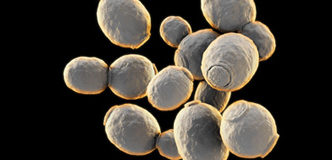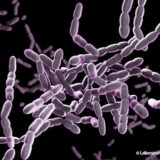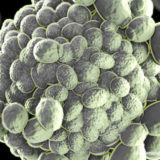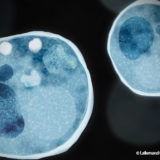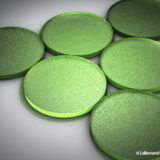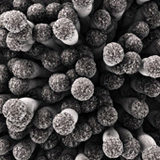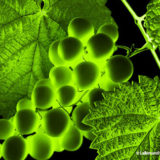Cross Evolution™  |
Select by the University of Stellenbosch, South Africa |
Saccharomyces cerevisiaie cerevisiae |
White Wine

Rosé Wine

|
15 % |
Low |
Enhance varietal character |
Product Declaration Safety Datasheet Technical Datasheet |
Cross Evolution® is a strong fermenting yeast, from the Institute for Wine Biotechnology at the University of Stellenbosch in South Africa, that is ideal for aromatic white and rosé wines with high alcohol potential, low fermentation temperatures, and low nitrogen levels. Cross Evolution is not a genetically modified yeast but a result of a unique breeding program resulting in hybrids. Cross Evolution® also contributes an increased mouthfeel component resulting in aromatic wines with balanced mouthfeel. Cross Evolution® is recommended for Chardonnay, Chenin blanc, Gewürztraminer, Pinot blanc, Pinot gris, Riesling, Roussanne, Sauvignon blanc and Viognier.
|
IONYS wf™  |
Selected in collaboration with INRA, Montpellier, France |
Saccharomyces cerevisiae cerevisiae |
Red Wine

|
15.5 % |
High |
High acidification power: |
Product Declaration Safety Datasheet Technical Datasheet |
IONYSwf™ is the first wine yeast that has been selected within the Saccharomyces cerevisiæ species for its capacity to significantly and naturally acidify must during fermentation. Wines obtained from high maturity
grapes and fermented with this yeast are well-balanced and more fresher.
|
Ruby™  |
Through innovative microbiological approach |
Saccharomyces cerevisiae cerevisiae |
Red Wine

|
16 % |
Low |
Thiols |
Product Declaration Safety Datasheet Technical Datasheet |
RUBY™ has been selected through an innovative microbiological approach and presents unique characteristics related to its beta lyase activity. Due to this specific metabolism, RUBY™ has an exceptional potential to release volatile thiols in red wines. Combining those distinctive properties and very robust and reliable alcoholic fermentation performance, RUBY™ is well suited for the production of intense, fresh and complex red wines. Wines fermented with RUBY™ show flavor profiles described as blackcurrant, gooseberry, plums, spices and some refreshing herbal notes, RUBY™ also favors fine tannic structure and volume with a long aftertaste.
|
| Enoferm AMH |
Selected by Geishenheim Institute - Germany |
Saccharomyces cerevisaie cerevisiae |
Red Wine

White Wine

Rosé Wine

High Brix Juice

Restart Stuck Ferment

|
15 % |
Moderate |
Varietal |
Product Declaration Safety Datasheet Technical Datasheet |
Originating from the Geisenheim Research Institute, AMH™ is a favorite for making Riesling, Pinot noir and Zinfandel. It is considered a color-friendly yeast that enhances spicy (clove, nutmeg) and fruit flavors and aromas while adding positive, smooth mouthfeel to the overall complexity. AMH™ has a long lag phase and a slow to medium fermentation rate. Therefore, a well-managed nutrient program during rehydration and fermentation is essential. Good ferment domination is obtained with AMH™ if the culture is allowed to develop in about 10% of the total must volume for 8 hours before final inoculation. Very malolactic bacteria compatible.
|
| Enoferm Syrah™ |
Isolated from the Côte du Rhône, France |
Sacchararomyces cerevisiae cerevisiae |
Red Wine

Rosé Wine

|
16 % |
Moderate |
Enhance varietal character |
Product Declaration Safety Datasheet Technical Datasheet |
Enoferm SYRAH™ is a Côtes du Rhône isolate used for Syrah, Merlot and Carignan. It is a high glycerol producer and offers good mouthfeel and stable color extraction. It requires high nutrient levels and shows the best sensory results when a proper nutrition strategy is followed. Typical aromas include violets, raspberries, cassis, strawberries, black pepper and grilled meat.
|
| LALVIN C |
An isolate from the Pasteur Institute- France |
Saccharomyces cerevisiae bayanus |
|
16 % |
Low |
|
Product Declaration Safety Datasheet Technical Datasheet |
|
| LALVIN ICV D47™ |
Selected by the ICV in the Côtes du Rhône, France |
Saccharomyces cerevisiae cerevisiae |
Red Wine

White Wine

Rosé Wine

|
14 % |
Low |
Enhance varietal character |
Product Declaration Safety Datasheet Technical Datasheet |
Enoferm ICV D47™ is a Côtes du Rhône isolate from Suze-la-Rousse for the production of fullbodied barrel fermented Chardonnay and other white varietals. When left on lees, ripe spicy aromas with tropical and citrus notes are developed. ICV D47™ is a high polysaccharide producer known for its accentuated fruit and great volume. On most white grape varieties, this yeast elaborates wines with ripe stable fruits or jam-like aromas. Thanks to these aromas, the cuvées fermented with the ICV D47™ are a good source of complexity in the blends. Moreover, ICV D47™ contributes to the wine’s silkiness and persistence. Excellent results are obtained for the production of top-of-the-range Chardonnay fermented in barrels, especially when blended with Lalvin ICV D21® fermented Chardonnays.
|
| LALVIN Rhone 2323 |
Selected by Inter-Rhône - France |
Saccharomyces cerevisiae cerevisiae |
|
15 % |
Moderate |
|
Product Declaration Safety Datasheet Technical Datasheet |
|
LEVEL2 Biodiva™  |
|
Torulaspora delbrueckii |
White Wine

Rosé Wine

High Brix Juice

|
10 % |
Moderate |
Enhance varietal and fermentation ester characters |
Product Declaration Safety Datasheet Technical Datasheet |
Originally released in kit form as Level2 TD™ for white wines, Lallemand has relaunched this yeast as a single product – BIODIVA™. Now winemakers can select Torulaspora delbrueckii and pair it with the appropriate Saccharomyces cerevisiae strain for both red and white wines. Enhance varietal and fermentation ester characters while contributing to mouthfeel and an overall increase in aromatic complexity. Suggested varieties include Chardonnay, Sémillon, Syrah and Pinot Noir.
|
LEVEL2 Flavia™  |
Selected by the Universitad de Santiago de Chile (USACH) |
Metschnikowia pulcherrima |
White Wine

|
3 % |
Moderate |
Enhances varietal characters |
Product Declaration Safety Datasheet Technical Datasheet |
|
LEVEL2 Laktia™  |
|
Lachancea thermotolerans |
Red Wine

|
7 % |
|
Acidity and freshness |
Product Declaration Safety Datasheet Technical Datasheet |
Laktia™ is a natural alternative for acidification. Laktia™ is a pure culture of Lachancea thermotolerans, selected by Lallemand for its unique properties to produce high level of lactic acid during fermentation. Used in sequential inoculation with most selected Saccharomyces cerevisiae yeast for red winemaking, Laktia™, by producing significant level of lactic acid, is a natural tool for blending and/or to re-equilibrate red wines from hot climate. Moreover than freshness and acidity, Laktia™ brings aromatic complexity since the beginning of alcoholic fermentation
|
LEVEL2 LEVEL 2 TD  |
Selected by the INRA-France |
Saccharomyces cerevisiae & Torulaspora delbrueckii |
White Wine

High Brix Juice

|
15 % |
High |
Esters |
Product Declaration Safety Datasheet Technical Datasheet |
LEVEL2 TD™ is an innovative kit of two compatible yeasts (Torulaspora delbrueckii 291 and a Saccharomyces cerevisiae) used in sequential inoculation, in order to promote aromatic intensity, complexity and mouthfeel in white wines.
|
| Lalvin BA 11™ |
Selected by Estaçao Vitivinicola de Barraida - Portugal |
Saccharomyces cerevisaie cerevisiae |
Red Wine

White Wine

Rosé Wine

High Brix Juice

|
16 % |
High |
Esters |
Product Declaration Safety Datasheet Technical Datasheet |
Lalvin BA11™ was selected in 1997 near Estação Vitivinicola de Barraida in Portugal. It has excellent fermentation kinetics, even at low temperatures. It promotes fresh aromatic characteristics and intensifies mouthfeel and lingering flavors in whites, such as Pinot gris. In relatively neutral white varieties, BA11™ encourages the fresh fruit aromas of orange blossom, pineapple and apricot.
|
| Lalvin BM45 |
Selected by the Consorzio del Vino Brunello de Montalcino and the University of Siena. Italy |
Saccharomyces cerevisiae cerevisiae |
Red Wine

White Wine

Rosé Wine

|
15 % |
High |
Varietal |
Product Declaration Safety Datasheet Technical Datasheet |
Lalvin BM45™ was isolated in the early 1990s in collaboration with the Consorzio del Vino Brunello de Montalcino and the University of Siena. BM45™ is a relatively slow starter and is well suited for long maceration programs. It has high nitrogen requirements and can produce sulfides if nutrient starved. When used in whites, BM45™ benefits greatly from rehydration with proper nutrition. During fermentation, BM45™ produces high levels of polyphenol-reactive polysaccharides, resulting in wines with great mouthfeel and improved color stability. BM45™ is used on red varieties to contribute jam, spice and earthy elements. It is also used to minimize vegetal characteristics. Some winemakers use BM45™ on Chardonnay as a blending component to increase mouthfeel.
|
| Lalvin BM4x4 |
Selected by the Consorzio del Vino Brunello de Montalcino and the University of Siena, Italy |
Saccharomyces cerevisiae cerevisiae |
Red Wine

White Wine

Rosé Wine

High Brix Juice

Restart Stuck Ferment

|
16 % |
High |
Varietal |
Product Declaration Safety Datasheet Technical Datasheet |
BM 4X4® is a blend of BM45™ and another yeast known for its fermentation reliability. BM45™ is known and appreciated around the world for its round mouthfeel and stable color (see above description for BM45). However, BM45™ is a slow fermenter and can require substantial nutrients to complete fermentation successfully and without the production of sulfides. While BM45™ has a very strong following among winemakers who enjoy its slow fermentation and its suitability for long maceration programs, there are others who desire the attributes of BM45™ but with a more timely and secure fermentation. BM 4X4® achieves this goal. During the yeast growth phase, BM 4X4® has the unusual capacity of releasing a significant quantity of polyphenol-reactive polysaccharides into the fermenting must. The quantity and the quality of the polysaccharides released during fermentation facilitate the production of red wines with great mouthfeel and improved color stability, with dependable fermentation kinetics under difficult fermentation conditions. In whites, BM 4X4® releases a high level of esters responsible for fruit aromas and also brings roundness to the mouthfeel.
|
| Lalvin BRL 97™ |
Selected by University of Torino - Italy |
Saccharomyces cerevisaie cerevisiae |
Red Wine

White Wine

Rosé Wine

High Brix Juice

Restart Stuck Ferment

|
16 % |
Moderate |
Enhances varietal aromas |
Product Declaration Safety Datasheet Technical Datasheet |
Lalvin BRL97™ was selected as a result of a four-year study by the University of Torino from over 600 isolates taken from 31 wineries in the Barolo region. The goal was to find a selected natural yeast from Nebbiolo that is able to retain both the color and the varietal character of this grape. BRL97™ has received good feedback from North American winemakers for its color stabilization and sensory contributions in heavier structured reds, such as Zinfandel, Barbera, Merlot and Nebbiolo, with long aging potential.
|
| Lalvin Clos™ |
Selected by the University of Rovira & Virgili - Spain |
Saccharomyces cerevisiae cerevisiae |
Red Wine

White Wine

Rosé Wine

High Brix Juice

|
17 % |
Moderate |
Varietal |
Product Declaration Safety Datasheet Technical Datasheet |
Lalvin Clos® was selected by the University of Rovira i Virgili in Spain from the Priorat region, situated in the province of Tarragona. Vinification trials show Lalvin Clos® has a very good implantation rate under difficult conditions, such as low nitrogen content over a wide range of temperatures. The results of experimental and winery trials with Carignan, Grenache, Syrah, Zinfandel and Tempranillo grapes confirm this yeast’s potential as an excellent tool to enhance aromatic complexity, structure and mouthfeel.
|
| Lalvin CY3079™ |
Selected by Bureau Interprofessionel des Vins de Bourgogne, Burgundy, France |
Saccharomyces cerevisiae cerevisiae |
White Wine

Rosé Wine

|
15 % |
Moderate |
Enhances varietal aromas |
Product Declaration Safety Datasheet Technical Datasheet |
Lalvin CY3079® was selected by the BIVB with the objective of finding a yeast that would complement typical white Burgundy styles. CY3079® is a steady, average fermenter, especially at cold temperatures (13°C). Its fermentation finish is slow due to an early autolysis resulting in roundness. This yeast greatly benefits from using rehydration nutrients and complex yeast nutrients designed for use during fermentation. When properly fed, CY3079® has good alcohol tolerance (up to 15%) and is a low producer of VA and sulfides. It is recommended for barrel-fermented Chardonnay and sur lie aging. Chardonnays produced with CY3079® have rich, full mouthfeel and are characterized by aromas of fresh butter, almond, honey, white flowers and pineapple.
|
| Lalvin DV10™ |
Isolated in the famous French region of high-quality sparkling wine,validated and recommended by the microbiology laboratory at the Pôle Technique et Environnement of CIVC, Epernay France |
Saccharomyces cerevisiae bayanus |
Red Wine

White Wine

Rosé Wine

Sparkling Wine

High Brix Juice

Restart Stuck Ferment

|
17 % |
Low |
Neutral |
Product Declaration Safety Datasheet Technical Datasheet |
Lalvin DV10™ was selected in the Champagne region and is approved by the CIVC in Epernay. DV10™ has strong fermentation kinetics over a wide temperature range and relatively low nitrogen demands. DV10™ is famous for its ability to ferment under stressful conditions of low pH, high total SO2 and low temperature. Low foaming and low VA production characterize it. DV10™ is considered a clean fermenter that respects varietal character and avoids the harsh sensory contributions of other one-dimensional “workhorse” yeasts, such as Prise de Mousse. It is classified as a Saccharomyces cerevisiae bayanus.
|
| Lalvin EC1118 ™ (Prise de mousse) |
Isolated in the famous French region of high-quality sparkling wine |
Saccharomyces cerevisiae bayanus |
Red Wine

White Wine

Rosé Wine

Sparkling Wine

High Brix Juice

Restart Stuck Ferment

|
18 % |
Low |
Neutral |
Product Declaration Safety Datasheet Technical Datasheet |
Lalvin EC1118™ is the original and is good for barrel fermentations. It ferments well at low temperatures and flocculates well with very compact lees. Under low nutrient conditions, EC1118™ produces a lot of SO2 (up to 30 ppm) and as a result can inhibit malolactic fermentation. It is classified as a Saccharomyces cerevisiae bayanus.
|
Lalvin ICV Black Pearl™  |
Selected by Institut Coopératif du vin |
Saccharomyces cerevisiae |
Red Wine

|
15 % |
Medium high |
Varietals. |
Product Declaration Safety Datasheet Technical Datasheet |
LALVIN ICV BlackPearl™ was isolated in the South of France, between the Mediterranean Sea and the Pyrenees, in the South of France. It was selected in collaboration with ICV Group (Institut Coopératif du Vin) for its robust fermentative performances in high maturity grapes and its ability to express the original black fruit potential of highquality red grapes.
|
| Lalvin ICV D21 |
Selected by the ICV Languedoc, France |
Saccharomyces cerevisiae cerevisiae |
Red Wine

White Wine

Rosé Wine

|
16 % |
Moderate |
Enhance varietal character |
Product Declaration Safety Datasheet Technical Datasheet |
Lalvin ICV D21® was isolated in 1999 from the Pic Saint Loup Languedoc “terroir” during a special regional program run by the Institut Coopératif du Vin (ICV) Natural Micro-Flora Observatory and Conservatory. ICV D21® was selected for fermenting red wines with stable color, intense fore-mouth, mid-palate tannin structure, and fresh aftertaste. Unlike most wine yeasts, ICV D21® contributes both higher acidity and positive polyphenol-reactive polysaccharides. Strong interactions of the polysaccharides with the floral and fruity volatile compounds contribute to a more stable aromatic profile in the mouth. These attributes avoid the development of cooked jam and burning-alcohol sensations in highly mature and concentrated Cabernet sauvignon, Merlot and Syrah. During fermentation, ICV D21® produces very few sulfides, and it is also noted for its good fermentation performance, even under high temperature and low nutrient conditions. It allows for the expression of fruit from the grapes while reducing the potential for herbaceous characters in Cabernet sauvignon. When blended with wines fermented with Lalvin ICV D254® and ICV D80®, ICV D21® brings fresher, sustained intense fruit and lively sensations beginning in the fore-mouth and carrying through to the aftertaste. ICV D21® is also used in very ripe white grapes, barrel fermented to develop fresh fruit aromas, volume and acidity that complement wines fermented with Enoferm ICV D47™ in blends. Rosé wines fermented with ICV D21® have enhanced red fruit, fore-mouth volume and balance, making it the perfect blending complement to rosé wines fermented with Lalvin ICV GRE™.
|
| Lalvin ICV D254 Eaux de vie |
Selected by ICV in the Côtes du Rhône, France |
Saccharomyces cerevisiae cerevisiae |
|
16 % |
Moderate |
Enhance varietal character |
Product Declaration Safety Datasheet Technical Datasheet |
|
| Lalvin ICV D254™ |
Selected by ICV in the Côtes du Rhône, France |
Saccharomyces cerevisiae cerevisiae |
Red Wine

White Wine

Rosé Wine

|
16 % |
Moderate |
Enhance varietal character |
Product Declaration Safety Datasheet Technical Datasheet |
Lalvin ICV D254® was selected by the ICV in 1998 from Syrah fermentations in Gallician, south of the Rhône Valley. In red wines, ICV D254® promises high fore-mouth volume, big mid-palate mouthfeel, intense fruit concentration, smooth tannins and a mildly spicy finish. Red wines made with ICV D254® may be blended with Lalvin ICV D80® or ICV D21® to create more concentrated, full-bodied wines. In unripe reds, ferment 25% to 50% of the lot with ICV D254® and the balance with Lalvin ICV GRE™ to help mask vegetative character. As a complement to Lalvin CY3079®, winemakers use ICV D254® for fermenting Chardonnay with nutty aromas and creamy mouthfeel. Very malolactic bacteria compatible.
|
| Lalvin ICV D80™ |
Selected by the ICV in Côte Rotie, France |
Saccharomyces cerevisiae cerevisiae |
Red Wine

White Wine

|
16 % |
Moderate |
Enhance varietal character |
Product Declaration Safety Datasheet Technical Datasheet |
Lalvin ICV D80® was isolated by Dominique Delteil of the ICV in 1992 from the Côte Rôtie area of the Rhône Valley for its ability to ferment musts high in sugar and polyphenols. With proper nutrition, aeration and fermentation temperatures below 28°C, ICV D80® will ferment up to 16% alcohol. ICV D80® brings high foremouth volume, big mid-palate mouthfeel and intense fine grain tannin to reds. It is one of the best strains for contributing big tannin volume and is characterized by ripe fruit, smoke and a licorice finish. When blended with wines fermented with Lalvin ICV D254® or Syrah, wines fermented with ICV D80® bring more tannin intensity to the blend.
|
| Lalvin ICV GRE™ |
Selected by the ICV in Cornas - Côtes du Rhône, France |
Saccharomyces cerevisiae cerevisiae |
Red Wine

White Wine

Rosé Wine

|
15 % |
High |
Enhance varietal character |
Product Declaration Safety Datasheet Technical Datasheet |
In 1992, Lalvin ICV GRE™ was selected from the Cornas area of the Rhône Valley. In reds, it contributes up-front fruit to easy-to-drink Rhône-style wines. ICV GRE™ is used with short skin contact regimes (3 to 5 days) to reduce vegetal and undesirable sulfur components in varieties like Merlot, Cabernet sauvignon, Grenache and Syrah. In fruit-focused whites like Chenin blanc, Riesling and Viognier, ICV GRE™ results in stable fresh-fruit characteristics and delivers a big fore-mouth impact. If the fruit maturity is less than optimum, ICV GRE™ is excellent for bringing overall balance to red, rosé and white wines. Rosé wines fermented with ICV GRE™ from more balanced maturity fruit emphasize red fruit and higher volume, and are complemented by blending rosés fermented with Lalvin ICV D21®.
|
| Lalvin ICV OKAY® |
ICV. INRA and SupAgro Montpellier, France |
Saccharomyces cerevisiae cerevisiae |
Red Wine

White Wine

Rosé Wine

|
16 % |
Low |
Esters |
Product Declaration Safety Datasheet Technical Datasheet |
The selection of the Lalvin ICV OKAY® yeast was the focus of research seeking to identify a new mechanism responsible for the control of SO2 and H2S production in wines. In collaboration with the INRA and SupAgro Montpellier, France, Lallemand and the ICV have selected Lalvin ICV OKAY® yeast for its special abilities to produce very low levels of SO2 and H2S while completing rapid alcoholic fermentation under a broad range of winemaking conditions.
Furthermore, the low acetaldehyde production of Lalvin ICV OKAY® yeast is a great asset in helping to stabilize wines with low to moderate SO2 levels. Recommended for fresh and aromatic wines, even in low temperature and NTU conditions.
Patent application by INRA.
|
| Lalvin ICV Opale 2.0™ |
Slected by ICV, France |
Saccharomyces cerevisiae cerevisiae |
Red Wine

White Wine

Rosé Wine

|
16 % |
Low |
Enhance varietal aromas |
Product Declaration Safety Datasheet Technical Datasheet |
Lalvin ICV Opale 2.0™ exhibits a special ability to produce very low level of H2S and SO2. Moreover, the final level of acetaldehyde fermented with Lalvin ICV Opale 2.0™ will
be a good asset to stabilize most wines with moderate SO2 level. Tend to contribute to exotic, tropical and citrus fruit intensity. Lalvin ICV Opale 2.0™ is a good alternative to other
selected wine yeast to obtain more freshness in wine.
|
Lalvin ICV SunRose™  |
Selected in collaboration witn Institut Coopératif du Vin, France |
Saccharomyces cerevisiae |
Rosé Wine

|
16 % |
Moderate |
Fresh fruity aromas |
Product Declaration Safety Datasheet Technical Datasheet |
Lalvin ICV SunRose™ is a selected wine yeast isolated from nature and specifically recommended for rosé wines that are red fruit focused. Lalvin ICV SunRose™ produces elegant and complex wines with a balanced, round mouthfeel while preserving freshness.
Selected in collaboration with the Institut Coopératif du Vin (ICV) Lalvin ICV SunRose™ is especially suitable for Mediterranean grape varieties.
|
Lalvin MSB™  |
Selected by Lallemand from Marlborough, New Zealand |
Saccharomyces cerevisiae |
White Wine

|
14.5 % |
Moderate |
Varietal |
Product Declaration Safety Datasheet Technical Datasheet |
Lalvin MSB™ was isolated from Marlborough Valley – New Zealand during a project led by the R&D Lallemand team. Lalvin MSB™ was specifically selected from several isolates for
its fermentation performance and ability to enhance Sauvignon blanc varietal character. Winery trials have consistently demonstrated that Lalvin MSB™ produces Sauvignon blanc
wines with strong tropical notes, zesty grapefruit, spicy with lemon pith flavours and lovely fruit weight. Varietal characters are accompanied with excellent fruity thiol production by
Lalvin MSB™.
|
Lalvin NBC™  |
Selected by COEB (Centre Oenologique de Bourgogne), France |
Saccharomyces cerevisiae |
White Wine

|
15 % |
Medium high |
Enhances varietal aromas |
Product Declaration Safety Datasheet Technical Datasheet |
LALVIN NBC™ was isolated on Chardonnay grapes in Burgundy with the COEB (Centre Oenologique de Bourgogne). It was selected both for its good alcoholic fermentation performance and its organoleptic profile, in accordance with modern chardonnay winemaking. LALVIN NBC™ enhances the varietal typicity while revealing minerality and elegance in high quality white wines.
|
Lalvin Persy™  |
Supagro and INRA (Montpellier, France) |
Saccharomyces cerevisiae cerevisiae |
Red Wine

|
16 % |
Low |
Non-production of SO2 |
Product Declaration Safety Datasheet Technical Datasheet |
Lalvin Persy™ is highly recommended to produce wines with fully expression of varietal aroma. Thanks to its unique properties, such as the non-production of SO2 and nonperceptible levels of H2S, Lalvin Persy™ is the right choice to ferment varietals like Shiraz, Tempranillo or Pinot noir, enhancing the fruit character, freshness and aroma persistency. Wines fermented with Lalvin Persy™ from
different varietals show a perceptible impact in mouthfeel perception, with round and soft tannins.
|
| Lalvin QA23™ |
Selected by the University of Tras o Montes e Alto Douro - Portugal |
Saccharomyces cerevisiae bayanus |
Red Wine

White Wine

Rosé Wine

High Brix Juice

Restart Stuck Ferment

|
16 % |
Low |
Enhance varietal aromas |
Product Declaration Safety Datasheet Technical Datasheet |
Lalvin QA23™ was selected in Portugal by the University of Trás-os-Montes and Alto Douro (UTAD) in cooperation with the Viticultural Commission of the Vinhos Verdes region. It is used for Chardonnay, Sauvignon blanc, Chenin blanc, Colombard and Semillon for the production of crisp and fresh-fruit intense wines. It enhances aromas of terpenic varietals through its beta-glucosidase activity and is an excellent thiol converter, making it a complementary yeast for developing varietal Sauvignon blanc passion fruit character. QA23™ has low nutrient and oxygen requirements and will ferment juice with low turbidity at low temperatures (10°C) to dryness. It is classified as a Saccharomyces cerevisiae bayanus. Very malolactic bacteria compatible.
|
| Lalvin R2™ |
Isolated in the Sauternes region by Brian Crozer (Australia) |
Saccharomyces cerevisiae bayanus |
White Wine

Rosé Wine

High Brix Juice

Restart Stuck Ferment

|
16 % |
High |
Esters |
Product Declaration Safety Datasheet Technical Datasheet |
Lalvin R2™ was isolated in the Sauternes region of Bordeaux by Brian Croser of South Australia. It has excellent cold temperature properties and will ferment as low as 5°C. Without good nutrition and protection against osmotic shock, it can tend to produce VA. For this reason, proper nutrition and protection during rehydration and during fermentation is recommended. R2™ helps produce intense, direct fruit-style whites by liberating fruit and floral aroma precursors. It is recommended for aromatic white varieties, such as Sauvignon blanc, Riesling and Gewürztraminer. It is classified as a Saccharomyces cerevisiae bayanus.
|
| Lalvin RC212™ |
Selected by the B.I.V.B. - Bourgogne, France |
Saccharomyces cerevisiae cerevisiae |
Red Wine

|
16 % |
High |
Enhance varietal characters |
Product Declaration Safety Datasheet Technical Datasheet |
Lalvin RC212® was selected from fermentations in Burgundy by the BIVB to extract and protect the polyphenols of Pinot noir. Due to the limited adsorption of polyphenols on RC212® yeast cell walls, there is limited color loss and structure is protected during aging. It requires high nutrient additions to avoid the potential development of sulfides and demonstrates best results when rehydrated with the right nutrient and protectant. RC212® consistently produces Pinot noir with good structure, ripe cherry, bright fruit and spicy characteristics. Wines made with RC212® can be blended with wines made with Lalvin RA17® to achieve more complexity and finesse.
|
| Lalvin Rhone 2226™ |
Selected by Inter-Rhône in the Côtes du Rhône, France |
Saccharomyces cerevisiae cerevisiae |
Red Wine

White Wine

Rosé Wine

High Brix Juice

Restart Stuck Ferment

|
18 % |
High |
Enhance varietal aromas |
Product Declaration Safety Datasheet Technical Datasheet |
Lalvin Rhône 2226™ is a vineyard isolate from Côtes du Rhône. It is very alcohol tolerant and highly recommended for high sugar reds and late harvest wines. In red varietals, high color and good structure, as well as black cherry, berry and cherry cola aromas characterize L2226
|
| Lalvin Rhône 4600™ |
Selected by Inter-Rhône - France |
Saccharomyces cerevisiae cerevisiae |
Red Wine

White Wine

Rosé Wine

High Brix Juice

Restart Stuck Ferment

|
15 % |
Low |
Esters |
Product Declaration Safety Datasheet Technical Datasheet |
Lalvin Rhône 4600® was selected from Viognier by the Inter-Rhône’s technical department after a three-year study of yeast well suited for fermenting fruit-forward, elegant white and rosé wines. High sugar and low nitrogen musts, when fermented cool (13.5°C) with the Rhône 4600®, have enhanced apricot and tropical fruit due to strong fatty acid ethyl ester production. Higher roundness with diminished bitterness also makes the Rhône 4600® a good choice for Rhône white varietals and Chardonnay. Although the Rhône 4600® does not enhance the varietal character of Sauvignon blanc or Semillon, this yeast does bring fatness and balance along with light aromatic ester notes as a good blending component.
|
| Lalvin Rhône2056 |
Selected by the ITV in the Côtes du Rhône, France |
Saccharomyces cerevisiae cerevisiae |
Red Wine

White Wine

Rosé Wine

|
16 % |
Moderate |
Esters |
Product Declaration Safety Datasheet Technical Datasheet |
Lalvin Rhône 2056® was selected by the ITV for its ability to maintain varietal fruit aromas and flavors of Côtes du Rhône varieties. It demonstrates good alcohol tolerance as well as low SO2 and VA production over a wide temperature range. Rhône 2056® is a quick to moderate fermenter with relatively high nutrient requirements. Rhône 2056® benefits greatly from good nutrition practices, maintains good color stability and is excellent for fruit-forward-style reds.
|
Lalvin Sauvy™  |
|
Saccharomyces cerevisiae |
White Wine

|
14.5 % |
Medium high |
Varietal thiols |
Product Declaration Safety Datasheet Technical Datasheet |
SAUVY™ has been selected through an innovative microbiological approach due to its unique metabolism and enzymatic activities resulting in the exceptional potential to uptake and release volatile thiols, especially 4MMP (also known as 4MSP). Combining those distinctive properties and abilities to express other aromas, SAUVY™ is well suited for the production of intense and fresh aromatic white
wines. Wines fermented with SAUVY™ show typical flavor profiles described as boxwood, gooseberry, tomato leaf, passion fruit, citrus and black currant. SAUVY™ also favors refreshing and crisp mouthfeel sensation.
|
| Lalvin Sensy™ |
|
Saccharomyces cerevisiae cerevisiae |
White Wine

|
14.5 % |
Low |
Varietal |
Product Declaration Safety Datasheet Technical Datasheet |
Lalvin Sensy™ has been characterized and selected for its very low capacity to produce H2S, SO2, and acetaldehyde, with the security to complete alcoholic fermentation especially when varietal aroma is sought after
|
Level2 Guardia™  |
Selected Institut Français de la Vigne et du Vin in Burgundy, France |
Metschnikowia pulcherrima |
Red Wine

|
3 % |
High |
Bioprotection |
Product Declaration Safety Datasheet Technical Datasheet |
Managing microbial community dynamics by encouraging beneficial microorganisms and repressing the growth of the detrimental ones is the fundamental principle of biocontrol. Level2 GUARDIA™ is a new non-Saccharomyces (Metschnikowia plucherrima) selected from nature by IFV (Institut Français de la Vigne et du Vin), highly adapted to this purpose of bioprotection in wines.
When applied early in the process, the excellent implantation and growth performance of LEVEL2 GUARDIA™ allows an early and efficient colonization of various ecological niches. LEVEL2 GUARDIA™ has also been screened and chosen for its capacity to secrete high concentrations of pulcherimmic acid, a strong iron chelating agent. This iron depletion makes the environment not suitable for the growth of other contaminant microbes. Because of these unique characteristics, LEVEL2 GUARDIA™ is highly efficient against a wide range of undesirable microorganisms (oxidative yeasts, Brettanomyces spp., acetic bacteria)
|
Level2 Initia™  |
Selected by Institut Français de la Vigne et du Vin, Burgundy, France |
Metschnikowia pulcherrima |
White Wine

Rosé Wine

|
3 % |
High |
Bioprotection |
Product Declaration Safety Datasheet Technical Datasheet |
LEVEL2 INITIA™ is a non-Saccharomyces yeast (Metschnikowia pulcherrima) selected from nature in Burgundy with the IFV (Institut Français de la Vigne et du Vin). LEVEL2 INITIA™ is an innovative and complete bioprotection tool developed to face the challenges of reducing SO2 use in white and rosé prefermentative steps. LEVEL2 INITIA™ is the first bioprotection yeast developed to limit oxidation phenomena in the early steps of winemaking due to its dual action of consuming oxygen and decreasing copper levels. Indeed, LEVEL2 INITIA™ has been selected from more than 100 strains of
Metschnikowia pulcherrima for its high dissolved oxygen consumption capacity. When used during pre-fermentative steps, it can partially decrease copper content, known as a catalyzer of oxidation reactions.
LEVEL2 INITIA™ has the capacity to control a wide range of undesirable microorganisms. As it is non fermentative and able to grow at low temperatures, LEVEL2 INITIA™ is a great biological tool particularly well adapted to manage prefermentative steps in white and rosé vinification. LEVEL2 INITIA™ is suitable for organic wine production in the EU.
|
| Uvaferm 43™ |
Selected by Inter-Rhône - France |
Saccharomyces cerevisiae bayanus |
Red Wine

White Wine

Rosé Wine

High Brix Juice

Restart Stuck Ferment

|
17 % |
Low |
Neutral |
Product Declaration Safety Datasheet Technical Datasheet |
Selected for its exceptional ability to restart stuck fermentations, Uvaferm 43® was chosen from among 33 different isolates that were tested against each other, and from the traditional yeasts typically used to restart stuck fermentations. The stuck fermentations used in the selection process were from wines with high alcohol levels (14.3% with 21 g/L RS) and high free SO2 (35 mg/L). The 43® yeast was recently found to be the most fructophilic yeast when compared to other yeasts promoted as being fructophilic. It is classified as a Saccharomyces cerevisiae bayanus.
|
| Uvaferm BDX™ |
Bordeaux region selection - France |
Saccharomyces cerevisaie cerevisiae |
Red Wine

|
16 % |
High |
Varietal |
Product Declaration Safety Datasheet Technical Datasheet |
A French isolate used extensively in California and Australia since the late 1980s, Enoferm BDX™ has perfect fermentation kinetics and does not generate a lot of heat during fermentation. It is highly recommended for the production of quality red wines, especially Merlot and Cabernet sauvignon, with minimum color loss and enhanced flavor and aroma.
|
| Uvaferm Exence™ |
University of Wine Biotechnology at the University of Stellenbosch (South Africa) |
Saccharomyces cerevisiae cerevisiae |
White Wine

Rosé Wine

|
14.5 % |
Low |
Esters |
Product Declaration Safety Datasheet Technical Datasheet |
Uvaferm eXence™ comes from the natural crossing between 2 yeast strains, followed by mass meeting approach strategy and selective pressure with the objective to obtain an aromatic yeast strain adapted to reveal varietal aromas such as thiols during fermentation of white and rosé wines.
|
| Uvaferm HPS™ |
Consejo Superior de Investigaciones Científicas (CSIC), Spain |
Saccharomyces cerevisiae cerevisiae |
|
16 % |
Moderate |
|
Product Declaration Safety Datasheet Technical Datasheet |
|
